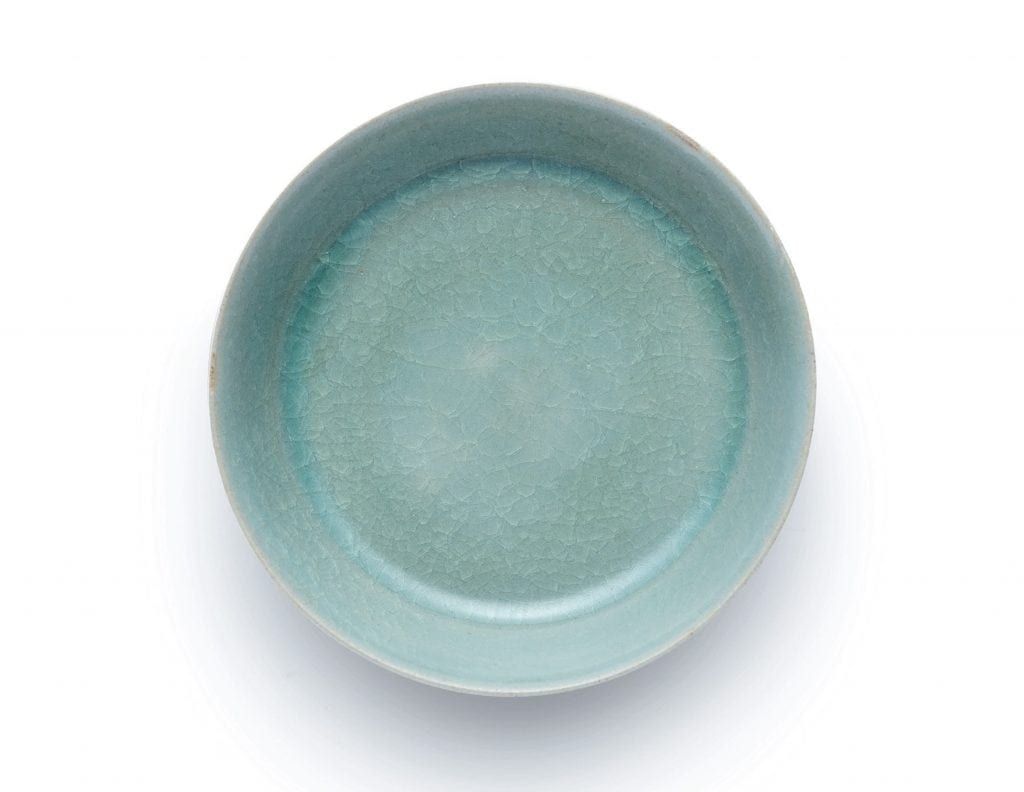A small but highly-important ceramic dish from Imperial China is expected to sell for more than £10 MILLION next month.
The brush washer is around 1,000 years old and was commissioned by the imperial court during the Song dynasty.
And it was made by Ru guanyao, which is one of the most revered of the Five Great Kilns used during this period.
The dish, which has a diameter of just 13cm and would have been used to clean brushes, has a glowing, intense blue-green glaze and ‘ice crackle’ pattern.
It is most likely the dish was made between 1086 and 1106 and it is extraordinarily rare for a Ru vessel to be sold at auction.
There are thought to be just 87 pieces of Ru official ware in existence and only six have been sold publicly since 1940.
The brush washer is one of only four in private hands and Sotheby’s will auction it in Hong Kong on October 3.
As a result of its rarity and importance, Sotheby’s has given it a guide price of in excess of £10 million – with Chinese artefacts known to vastly exceed estimate at auction.

Nicolas Chow, deputy chairman, Sotheby’s Asia, said: “We are proud to present several extraordinary collections of Chinese art encompassing understated ceramics from the Song dynasty, refined objects for the scholar’s studio, and porcelain and works of art destined for the palaces of the Ming and Qing emperors.
“There will be a unique opportunity to acquire a near perfect and ravishing small brush washer from the Northern Song dynasty Ru kilns, the most celebrated and forged ceramic type throughout Chinese history.
“It is the finest example extant among all four heirloom pieces in private hands.”
Ru ware has an almost mythical status which is attributed to its short-lived production period, generally believed to not have exceeded 20 years.
It is a hugely important part of China’s culture, with the small pieces considered the epitome of the Chinese potters’ craft.
The last brush washer to be sold publicly was in 2012 when a dish was auctioned by Sotheby’s.
It had a guide price of £4.8 – £6.5 million but ended up selling for £16.8 million following a tense battle.

